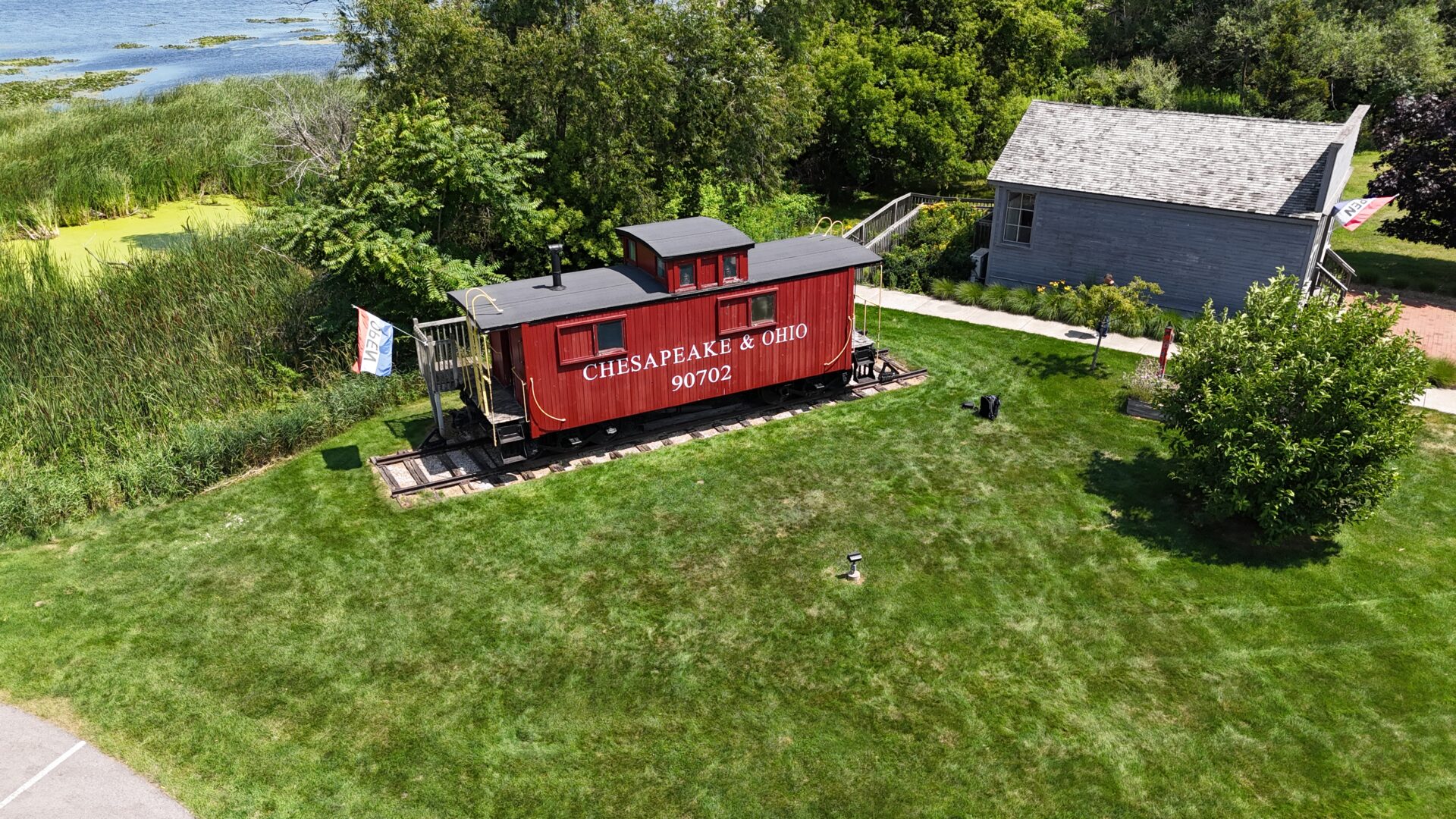
This year marks a significant milestone for a cherished piece of local history, the caboose at the White Lake Chamber of Commerce and Visitor Bureau celebrates its 100th birthday. This iconic caboose, bearing the number 90702, has a rich history intertwined with the development of railroads in the region and has become a beloved landmark in the community.
A Journey Through Time
Built in 1924 by the Standard Steel Car Company, the caboose is unique for its wooden construction. Initially part of the Pere Marquette Railroad and later the Chesapeake and Ohio Railroad, the caboose underwent numerous modifications over the years to adapt to the evolving needs of the railroads. Today, it stands proudly restored to its 1940s era, offering a glimpse into the past for all who visit.
The Quest for Preservation
The story of how the caboose found its permanent home in Whitehall began in the 1980s when Walter Gibbs sparked an interest in preserving these iconic rail cars, which were being retired. Eleanor Polley, the director of the Chamber at that time, took up the cause with fervor. In 1987, the Chamber of Commerce purchased the caboose from the Muskegon Railroad Historical Society for $1,000, and it arrived at its new home in August of that year.
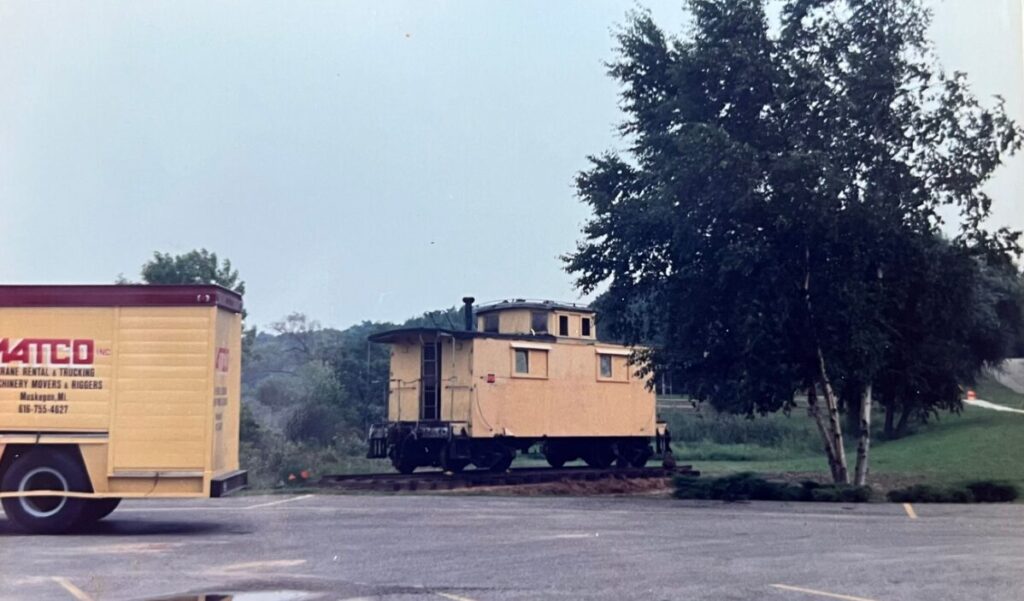
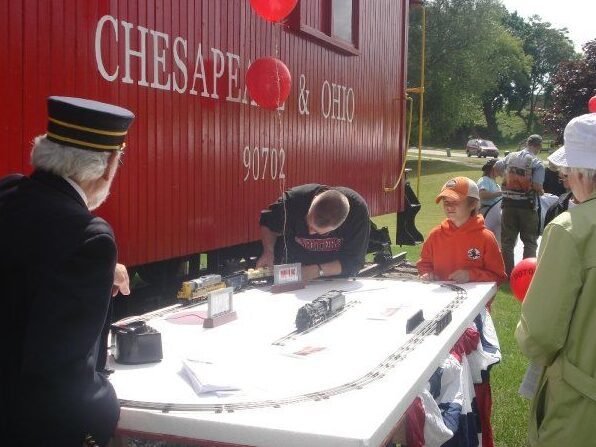
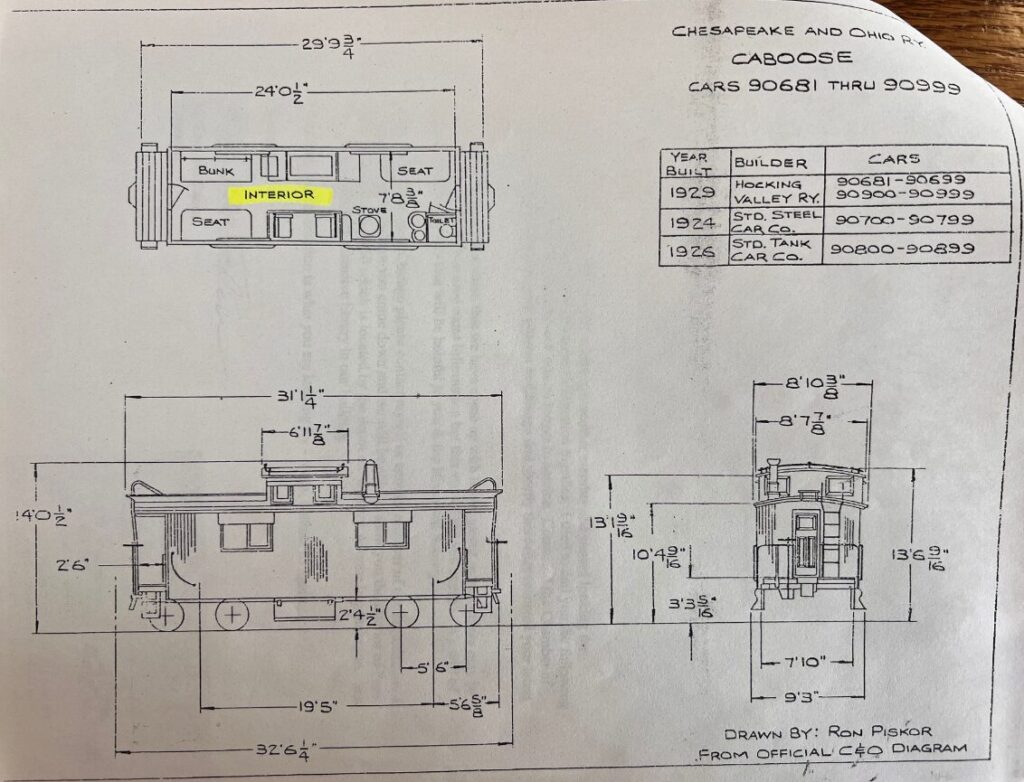
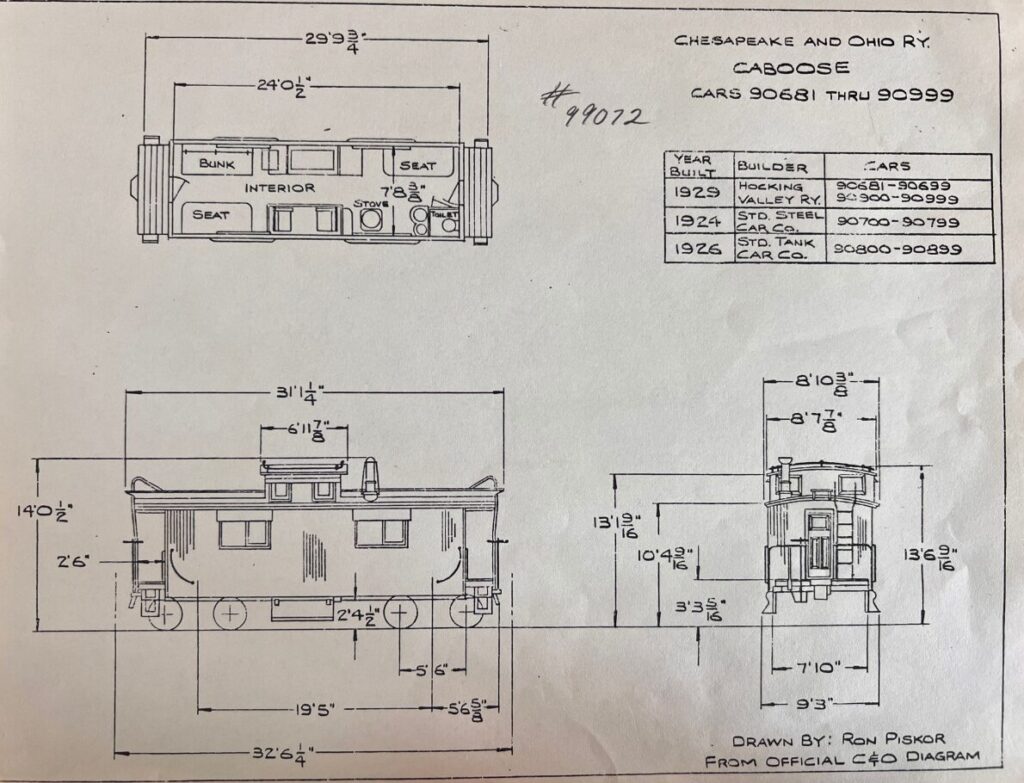
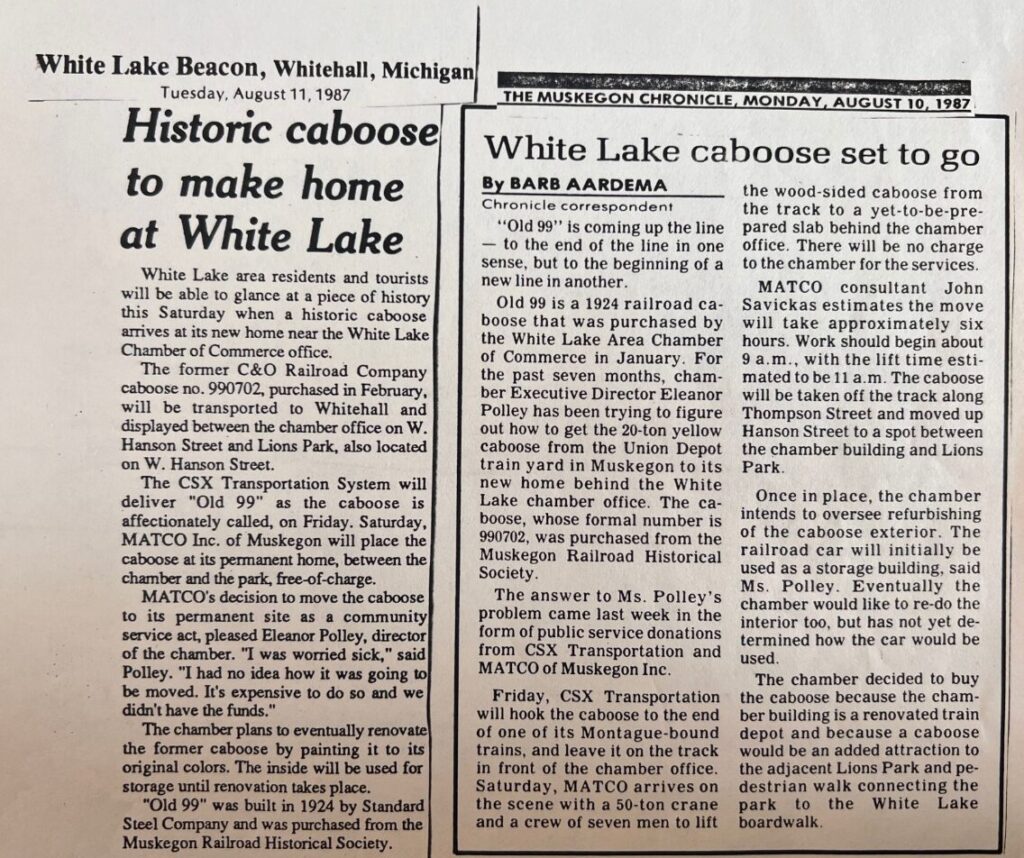
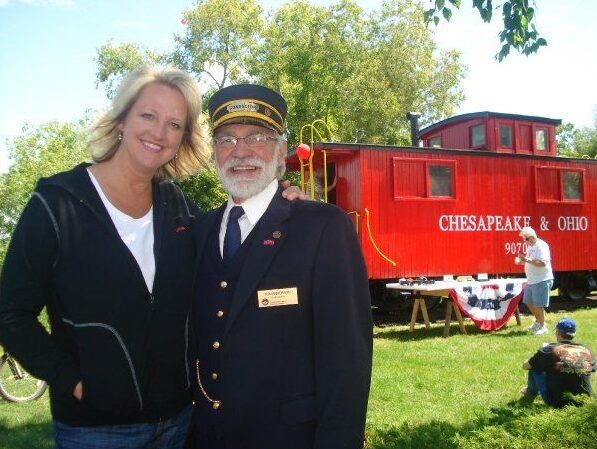
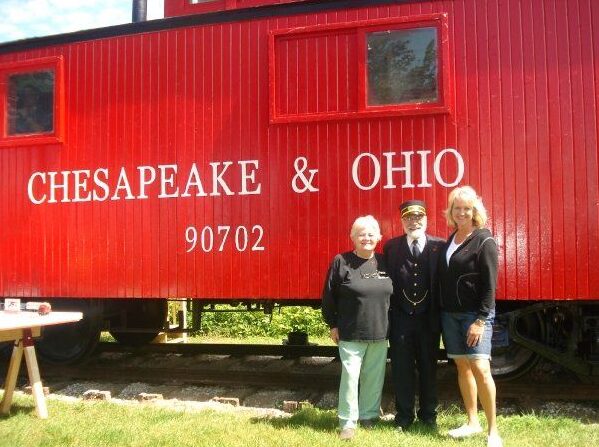
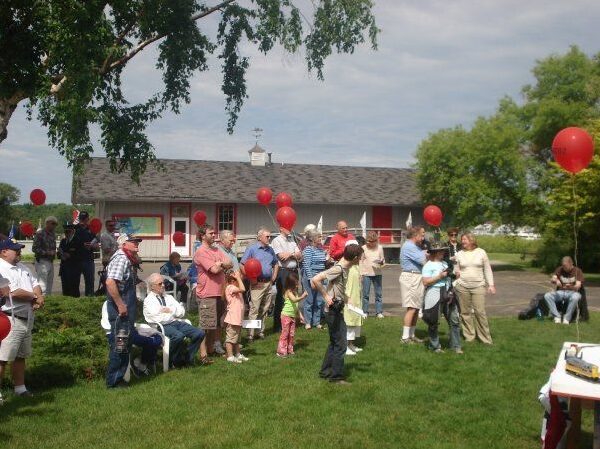
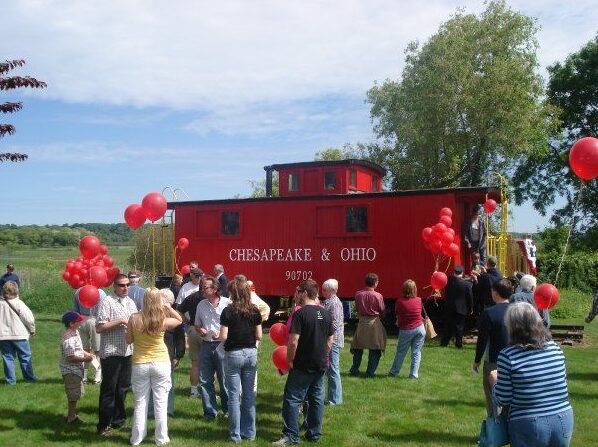
Restoration and Community Involvement
Around 1990, Pete Damm spearheaded the restoration efforts, with the help of local technicians and suppliers. This labor of love was dedicated to his father, a brakeman on the Chesapeake & Ohio Railroad. After the restoration, the caboose remained in storage for nearly two decades until community members, led by Helen Fink, transformed it into a museum, which opened its doors in June 2009.
A Living Museum
Throughout the summer, the caboose is open during office hours, allowing visitors to step back in time. Inside, a video loop narrates the history of the railroad era in the area, enriching the experience for guests. Over the years, the caboose has welcomed thousands of visitors and served as the backdrop for countless memorable moments, from weddings to graduation photos.
Local painter Paul Potter has diligently maintained the caboose’s vibrant appearance, ensuring it remains a striking feature of the community.
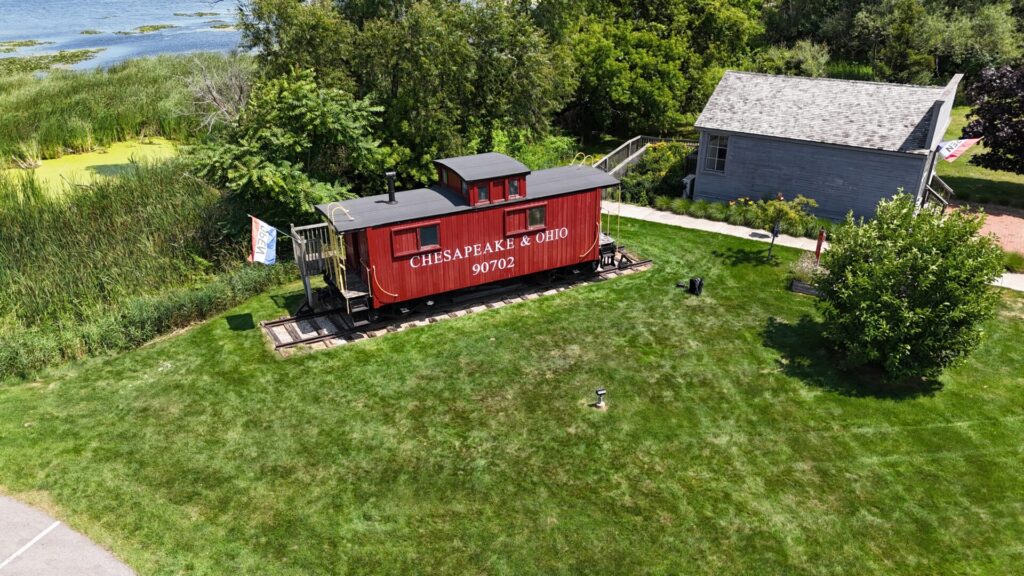
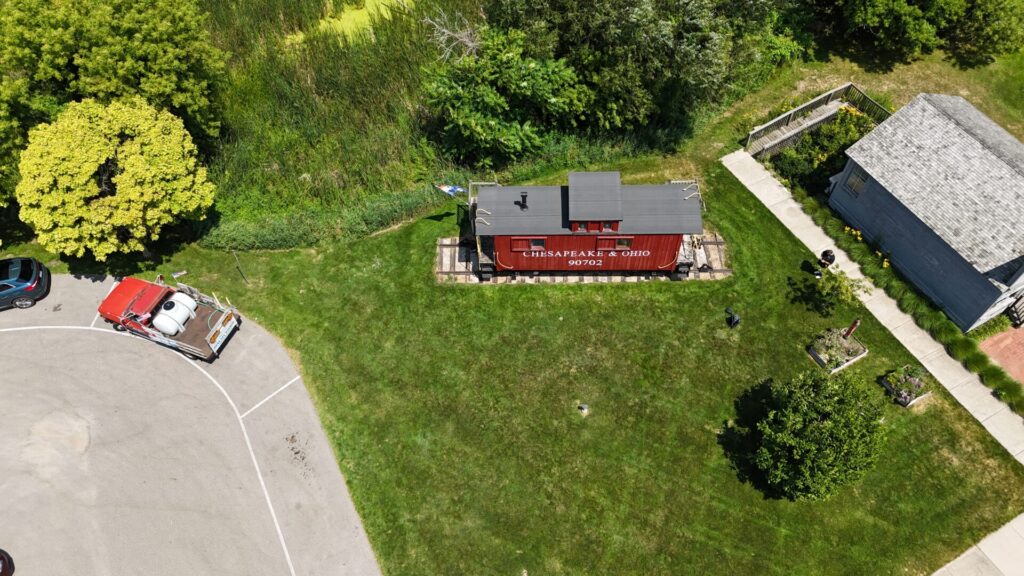
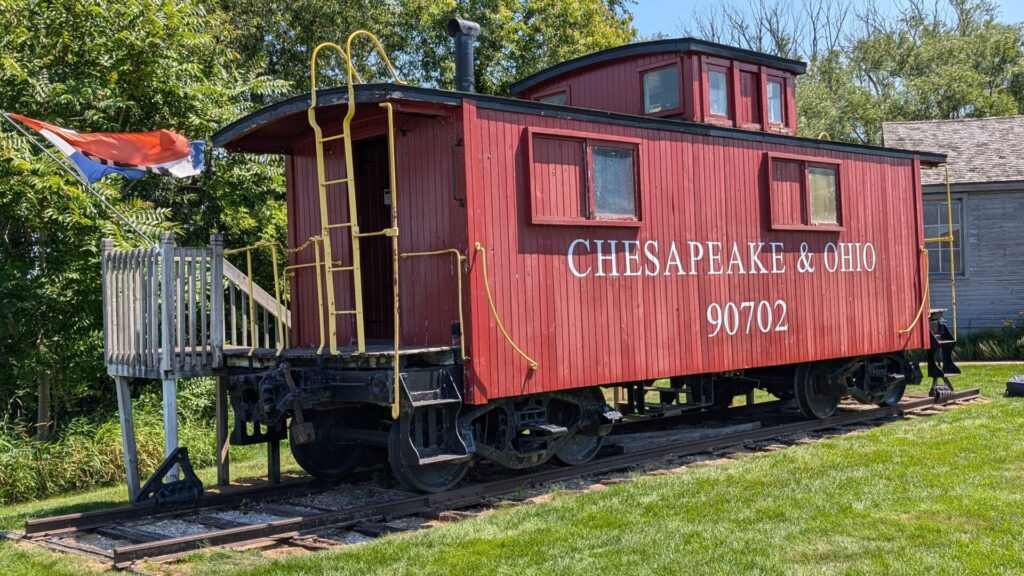
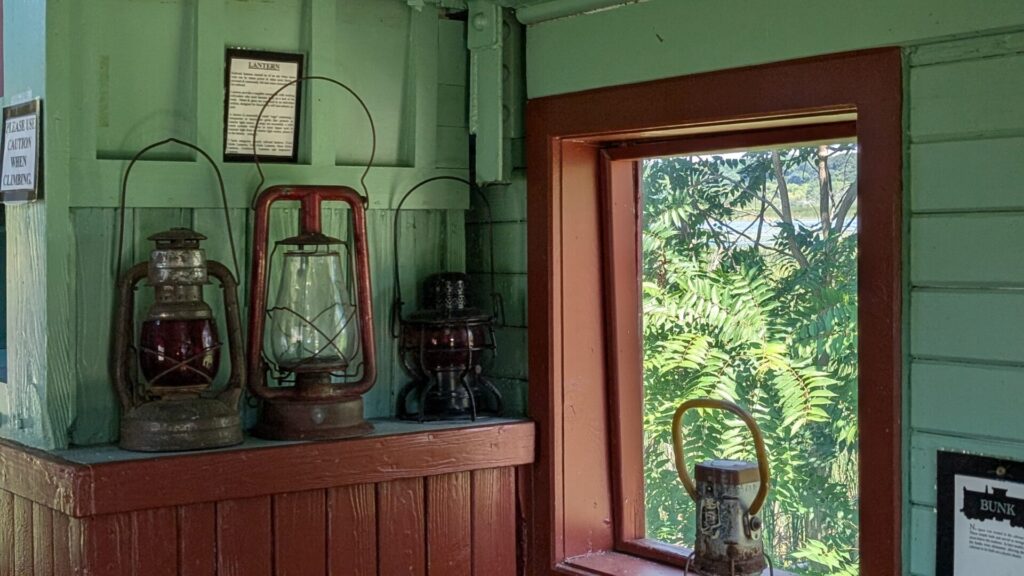
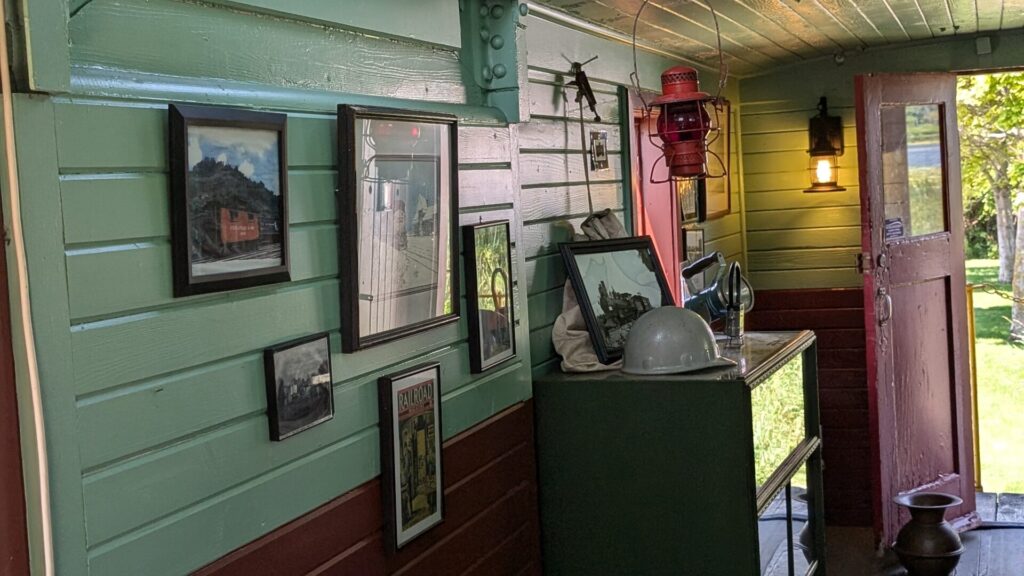

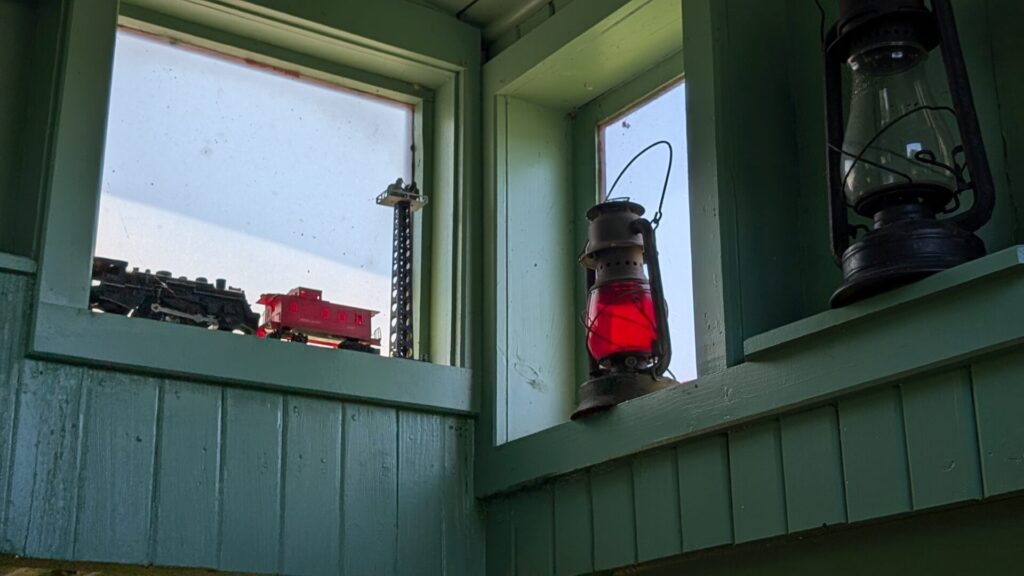
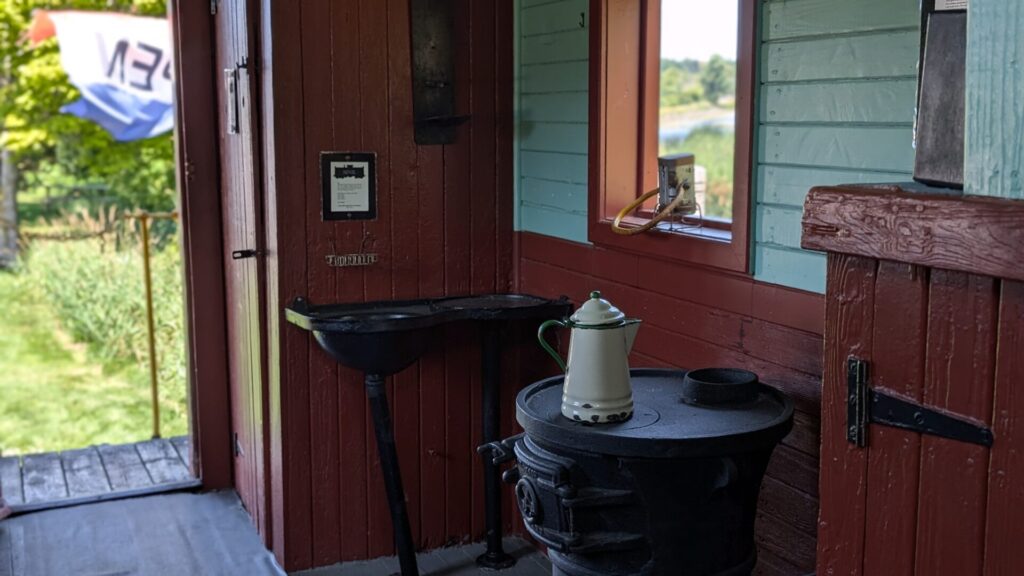
The Role of Cabooses
Originally, cabooses served as makeshift shelters for train crews, providing refuge from the elements. Over time, they evolved to include cupolas for better visibility of the train’s rear, and they housed a conductor, brakeman, and flagman. For long journeys, the caboose functioned as a home away from home, complete with bunks and a stove for cooking.
The “Old 99” Nickname
Affectionately nicknamed “Old 99” due to a typo in a press release from the Chamber in 1987, the caboose’s official number, 90702, sometimes causes confusion. The nickname “Old 99” stuck with many locals, adding to the caboose’s unique charm and history.
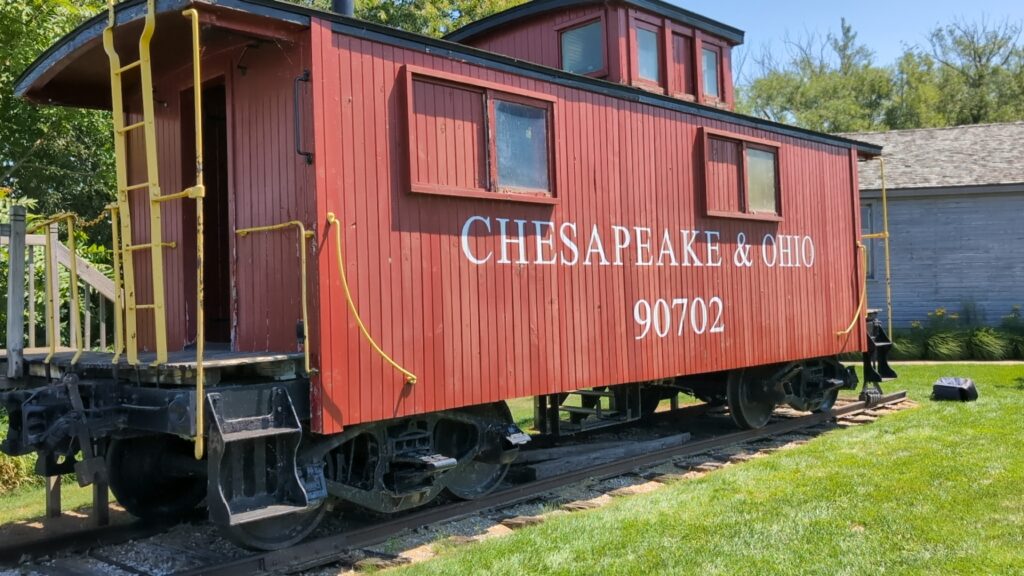
A Nod to the Past
Before the establishment of the bike path, the first train service to and from Whitehall began on October 29, 1870, and to Montague in 1871. The local depot, built in 1926 by the Pere Marquette Railroad Company, stands as another testament to the area’s rich railroad heritage.
As we celebrate the 100th birthday of this remarkable caboose, we honor the history and the countless stories it represents. The caboose at the White Lake Chamber of Commerce and Visitor Bureau is not just a relic of the past but a vibrant symbol of the community’s enduring connection to its railroad roots.
To learn more about White Lake Area history, check out the White Lake Area Historical Society.
Check out our White Lake Area Historical Series here.
Brent is the Managing Partner of CatchMark Technologies and a seasoned technologist with over 25 years of experience in IT leadership, cybersecurity, and technical operations. He began his career serving in the U.S. Army, where he worked extensively with electronics—laying the foundation for his lifelong passion for technology and problem-solving. Brent holds a Certified Information Systems Security Professional (CISSP) certification and currently leads CatchMark’s Cybersecurity and Tech Support teams. Known for his strategic thinking and hands-on expertise, he excels in guiding secure, scalable solutions and driving innovation across complex technical environments.
Must See
-


Community
/ 3 hours agoCity of Whitehall Council Meeting Recap – June 10, 2025
The City of Whitehall Council met on June 10, 2025, to discuss a range...
By Kara Raeth -


Community
/ 18 hours agoSummer Kick-Off Party to Support Whitehall Athletics
Get ready for a night of family fun, games, and community spirit—the 2nd annual...
By Amy Yonkman -


Community
/ 21 hours agoMontague Township Board Meeting Recap – June 10, 2025
The Montague Township Board convened for its regular meeting on June 10, 2025, covering...
By Kara Raeth











